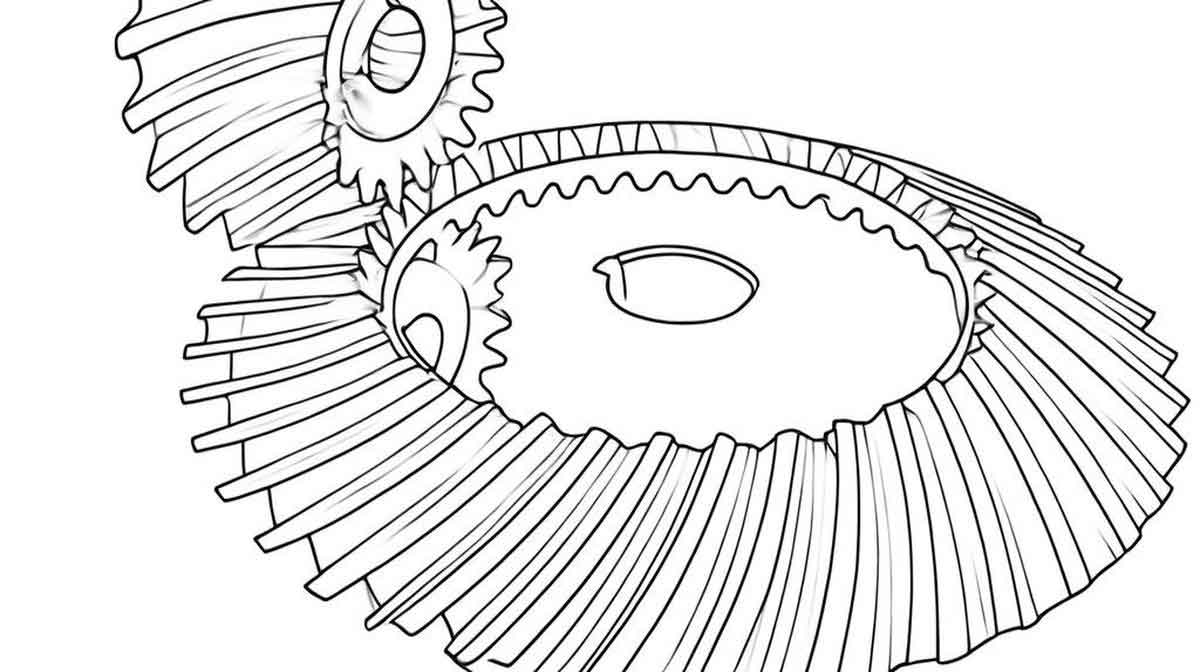Abstract
This comprehensive article delves into the detailed failure analysis of transmission gears, specifically the driving and driven gears of an N2 sensor from an aerospace application. The gears, made of 12Cr2Ni4A steel with a carbonitriding surface treatment, exhibited severe wear and tooth fractures during operation. Utilizing macroscopic fracture observation, energy spectrum composition analysis, scanning electron microscope (SEM) observation, and metallographic analysis, the study concludes that fatigue fracture and wear caused by abnormal matching were the primary failure mechanisms. This paper aims to provide a thorough understanding of the failure mechanisms, contributing factors, and preventive measures for transmission gear failures in aerospace systems.

1. Introduction
Transmission gears are vital components in aerospace systems, transmitting power and torque from one rotating part to another. The reliability and durability of these gears are crucial for ensuring the safe and efficient operation of aircraft engines. In this study, we analyze the failure of driving and driven gears of an N2 sensor, which experienced severe wear and tooth fractures during flight. The gears, manufactured from 12Cr2Ni4A steel with a carbonitriding surface treatment, were subjected to rigorous investigation to identify the root causes of the failure.
2. Background and Problem Statement
During a flight, the N2 sensor of a certain aircraft indicated zero N2 speed, resulting in a single-engine shutdown. Post-flight inspection revealed the presence of numerous fine metal particles in the oil filter of the oil accessories and the metal chip sensor. Energy spectrum analysis confirmed that these particles belonged to low-alloy steel with a carbonitriding layer, indicative of gear wear. Upon disassembling the N2 speed sensor installation base, severe wear and tooth fractures were observed on both the driving and driven gears.
3. Material and Methods
3.1 Material Specification
The driving and driven gears were manufactured from 12Cr2Ni4A steel, a low-alloy steel widely used in aerospace applications due to its excellent mechanical properties and wear resistance. The gears were subjected to a carbonitriding surface treatment to further enhance their surface hardness and wear resistance.
3.2 Failure Analysis Methods
- Macroscopic Fracture Observation: Visual inspection of the gears’ macroscopic morphology to identify wear patterns and fracture features.
- Energy Spectrum Composition Analysis: Analysis of the metal particles found in the oil filter to confirm their composition and identify any anomalies.
- Scanning Electron Microscope (SEM) Observation: Microscopic examination of the gears’ fracture surfaces to analyze fatigue crack initiation, propagation, and failure modes.
- Metallographic Analysis: Examination of the gears’ microstructure and hardness to assess material integrity and confirm adherence to technical specifications.
4. Results and Discussion
4.1 Macroscopic Observations
The macroscopic observations revealed that both the driving and driven gears exhibited severe wear, with the driven gear showing more significant damage. The driven gear had 33 out of 38 teeth with missing tooth tips, and most of these fractures exhibited rough, worn surfaces with no apparent fatigue features. A few teeth, however, showed clear fatigue fracture characteristics, such as fatigue arcs and radial striations, indicating fatigue crack initiation and propagation.
4.2 SEM Analysis
SEM analysis of the fracture surfaces provided detailed insights into the failure mechanisms. The driven gear’s fractured teeth exhibited three distinct regions: the initiation zone, the propagation zone, and the final fracture zone. The initiation zone was located on the surface and featured a short line source, indicating high initial fatigue stress. The propagation zone was characterized by severe wear, fatigue arcs, and fine fatigue striations, indicating a prolonged fatigue crack propagation process. The final fracture zone, located within the carbonitrided layer, exhibited intergranular fracture characteristics.
The driving gear showed more severe wear and overloading damage. The fractured teeth displayed a mixture of severe wear and overload fracture features, with the overload fracture surfaces exhibiting quasi-cleavage fracture morphology. The wear patterns on the teeth indicated poor meshing between the driving and driven gears.
4.3 Metallographic Analysis
Metallographic examination revealed that the gears’ microstructures were in compliance with technical specifications. Both gears had uniform carbonitrided layers with a thickness ranging from 0.15 to 0.19 mm for the driven gear and an unspecified but visibly worn layer for the driving gear. The core microstructure consisted of tempered martensite with a small amount of retained austenite and fine acicular martensite.
Furthermore, the microhardness tests conducted on the center of the driving and driven gears demonstrated average hardness values of 417HV and 436HV respectively, under a test load of 2.94N. While the standard test load is specified as 588N (60kg), the observed hardness values, albeit slightly elevated due to severe wear and extrusion, fell within the acceptable range of 319-410HV when converted to HRA scale. This indicates that the gears’ material properties, including hardness, were satisfactory and not a contributing factor to the failure.
The metallographic analysis confirmed the absence of material defects in both gears, reinforcing the conclusion that the failure was not due to inherent material issues but rather due to operational factors. The carbonitrided layers, which were designed to enhance wear resistance and surface hardness, were found to be intact and of uniform thickness in the driven gear, further emphasizing the adequacy of the surface treatment. However, the worn state of the driving gear’s carbonitrided layer precluded an accurate assessment of its original thickness.
In summary, the metallographic analysis verified that the gears’ microstructures, including the carbonitrided layers and core microstructures, were in accordance with the technical requirements and standards, thus eliminating material defects as a cause of failure. The observed hardness values, though slightly influenced by wear, were within acceptable limits, suggesting that the gears’ material properties were not compromised prior to failure.
